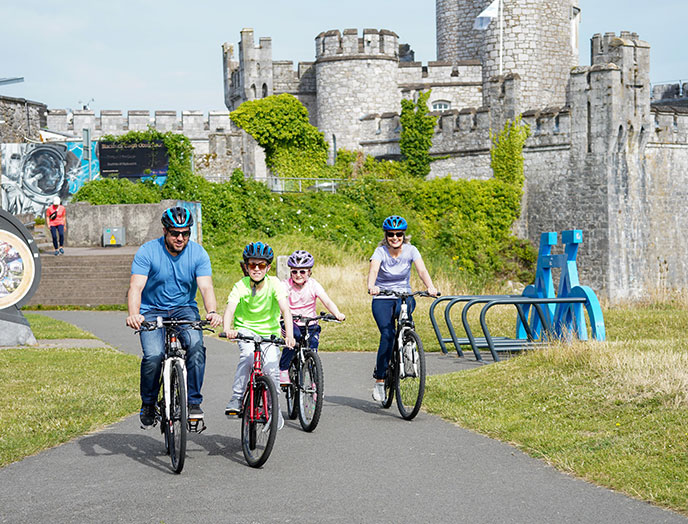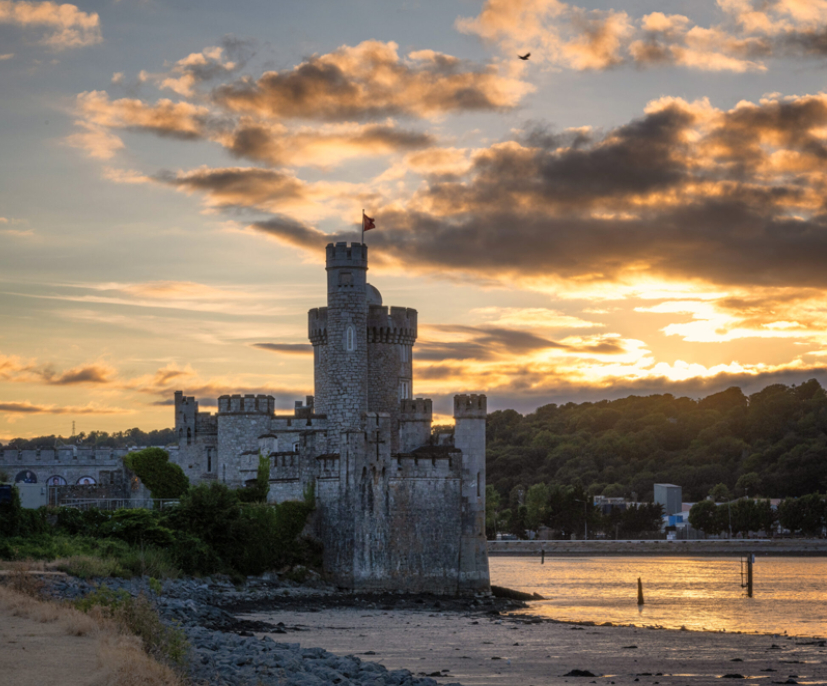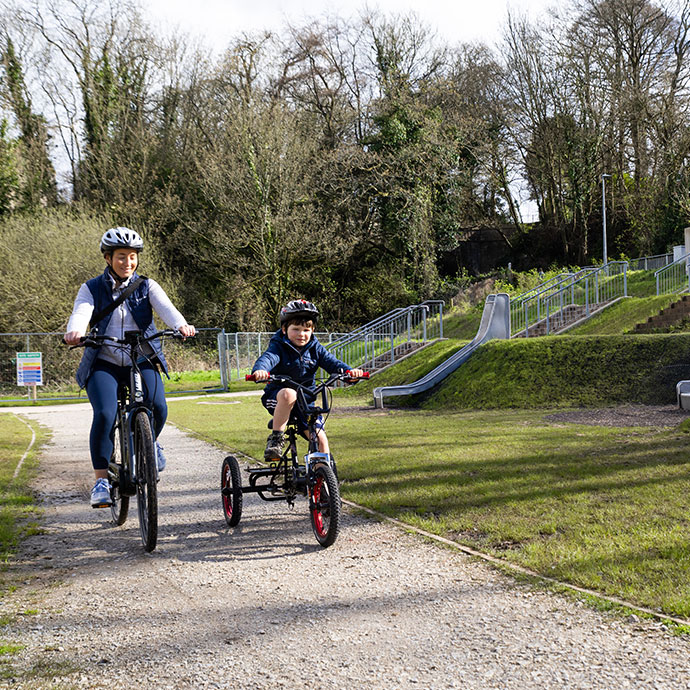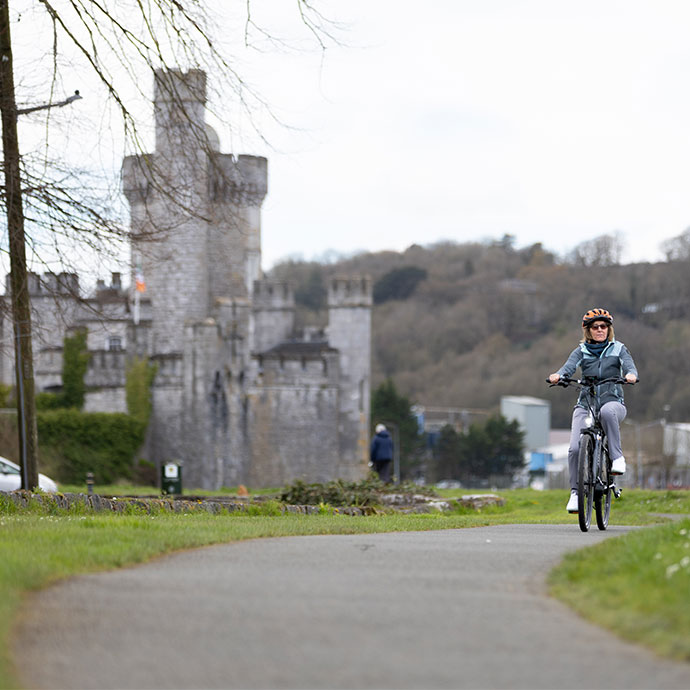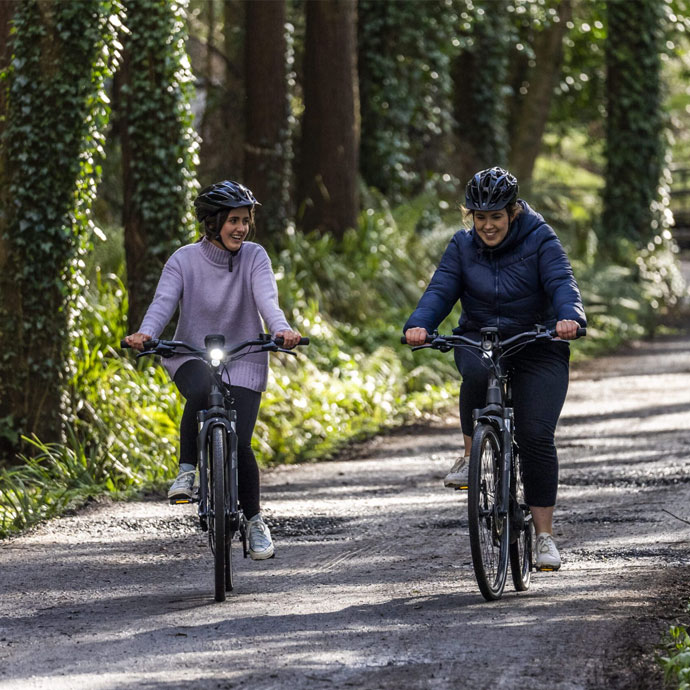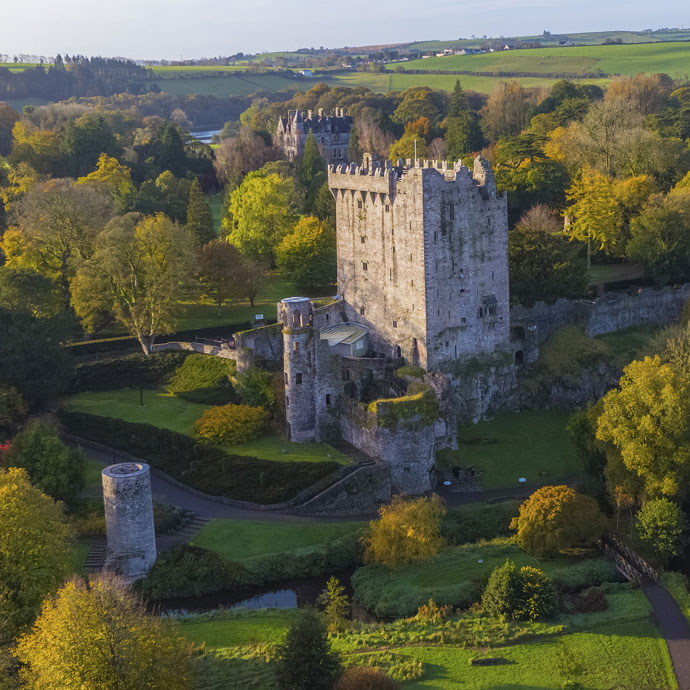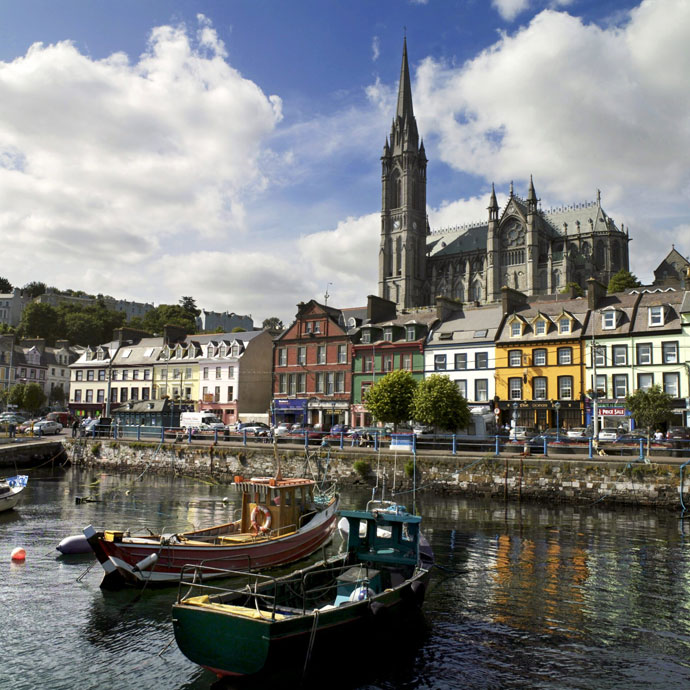Our Cork Routes
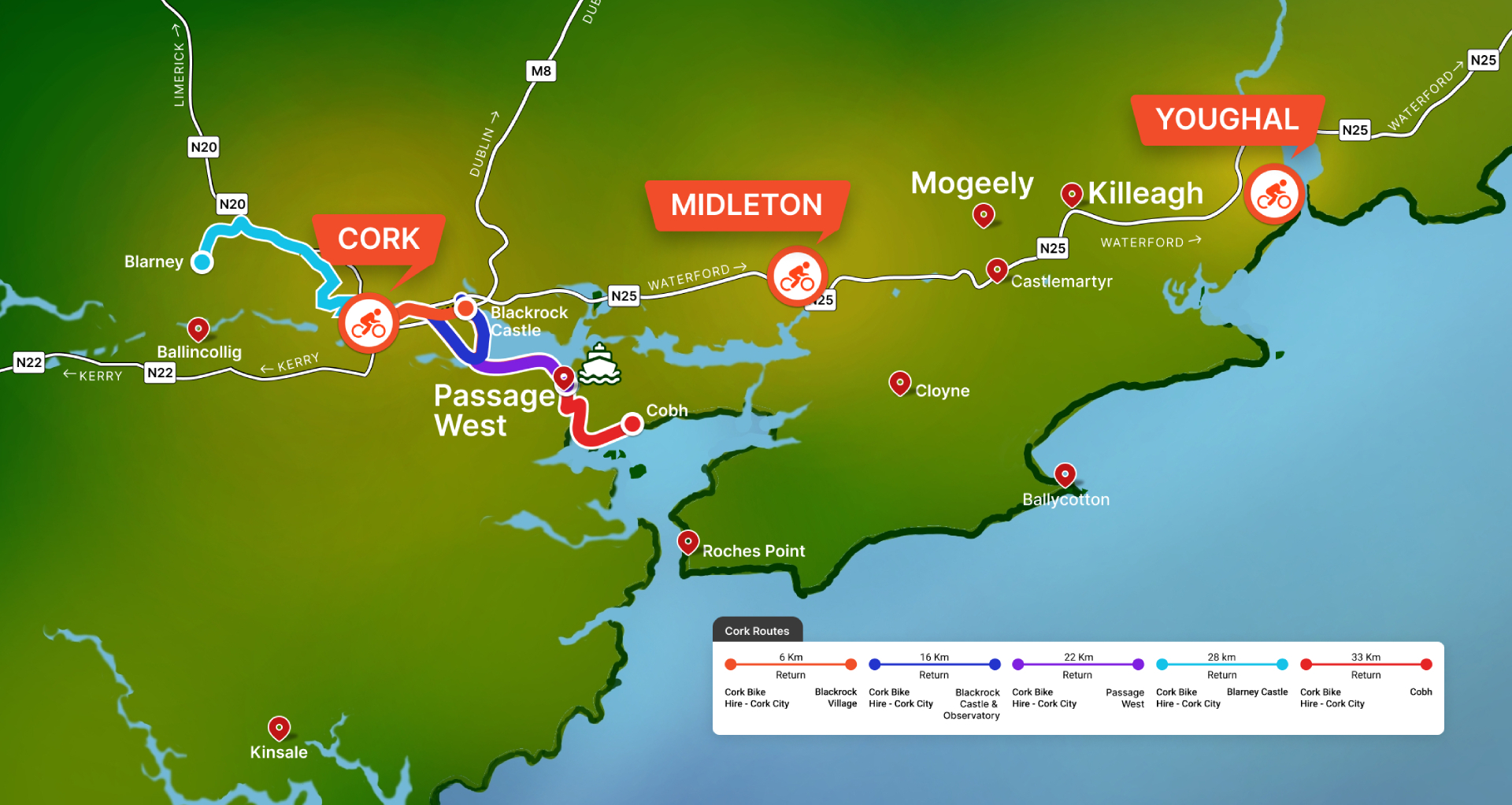
Blackrock Breeze – The Marina Market - Blackrock Village and Return
Distance:
6km
Level of Difficulty:
Easy, on the flat
Suitable for:
All
Track Level:
Predominantly off road, 1km stretch to The Marina on a cycle lane.
Local Treasures:
Marina Walk, rowers on the River Lee, Páirc Uí Chaoimh, the Atlantic Pond, native trees, shrubs and wildflower, large slides for the children, Sunday Market, bakeries, ice cream parlour and local pub.
Booking For:
1 & 2-Day Bike Hire from Cork City
Harbour & Castle – The Marina Market – Blackrock Castle & Observatory
Distance:
16km
Level of Difficulty:
Easy, on the flat, one small incline
Suitable for:
All
Track Level:
Predominantly off road, 1km stretch to The Marina on a cycle lane and 1km between Blackrock Castle & Blackrock village on road, however you can avoid this if you return via the Greenway.
Local Treasures:
Marina Walk, rowers on the River Lee, Páirc Uí Chaoimh, the Atlantic Pond, native trees, shrubs and wildflower, large slides for the children, stone cut bridges, Sunday Market, bakeries, ice cream parlour and local pub.
Booking For:
1 & 2-Day Bike Hire from Cork City
Greenway Pedal to Passage West – The Marina Market to Passage West
Distance:
22km
Level of Difficulty:
Easy, on the flat, two short inclines
Suitable for:
All who are comfortable to cycle the distance.
Track Level:
Predominantly off road, 1km stretch to The Marina on a cycle lane and 1km between Blackrock Castle & Blackrock village on road, however you can avoid this if you return via the Greenway.
Local Treasures:
Marina Walk, rowers on the River Lee, Páirc Uí Chaoimh, the Atlantic Pond, native trees, shrubs and wildflower, large slides for the children, stone cut bridges.
Passage West: Cú Coffee, Maritime Museum, playground.
Blackrock: Sunday Market, bakeries, ice cream parlour and local pub.Booking For:
1 & 2-Day Bike Hire from Cork City
Gab & Go! Blarney Castle Spin – The Marina Market to Blarney Castle Route
Distance:
27.5km
Estimated Time:
3 hours for full route
Level of Difficulty:
Challenging – hilly. Recommend electric bike or high level of fitness.
Suitable for:
Those comfortable to cycle on road, in the city and to cycle the distance.
Track Level:
On road.
Local Treasures:
Blarney Castle; Blarney Wollen Mills.
Booking For:
1 & 2-Day Bike Hire from Cork City
Ferry Wheels to Cobh – The Marina Market to Passage West and onto Cobh Route
Distance:
33km
Level of Difficulty:
Moderate, on the flat, three short inclines
Suitable for:
Those comfortable to cycle on road, and to cycle the distance.
Track Level:
On and off road and a 5-minute ferry transfer (€3 return for cyclists)
Local Treasures:
Marina Walk, rowers on the River Lee, Páirc Uí Chaoimh, the Atlantic Pond, native trees, shrubs and wildflower, stone cut bridges.
Passage West: Cú Coffee and Maritime Museum.
Cobh: The Titanic Experience, St. Coleman’s Cathedral, Victorian Promenade and bandstand, Cobh Heritage Centre, and a cruise liner if one is berthed on the day of your visit.
Blackrock: Sunday Market, bakeries, ice cream parlour and local pub.Booking For:
1 & 2-Day Bike Hire from Cork City



